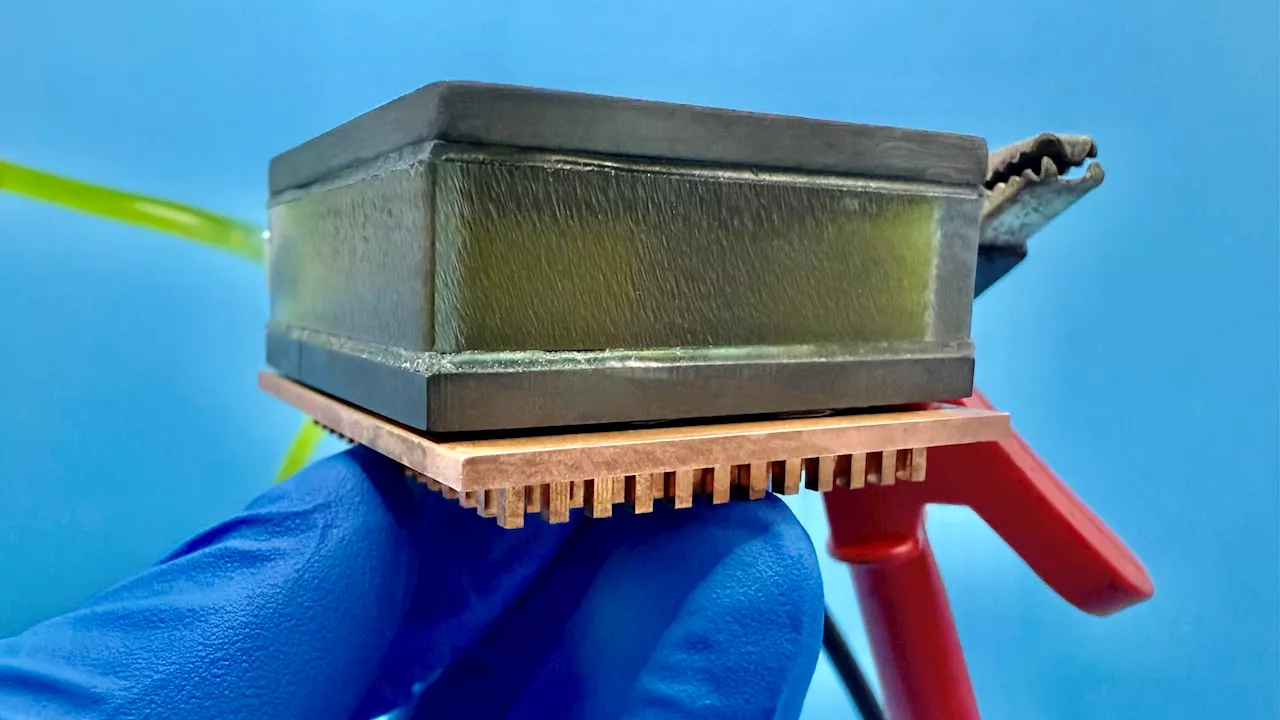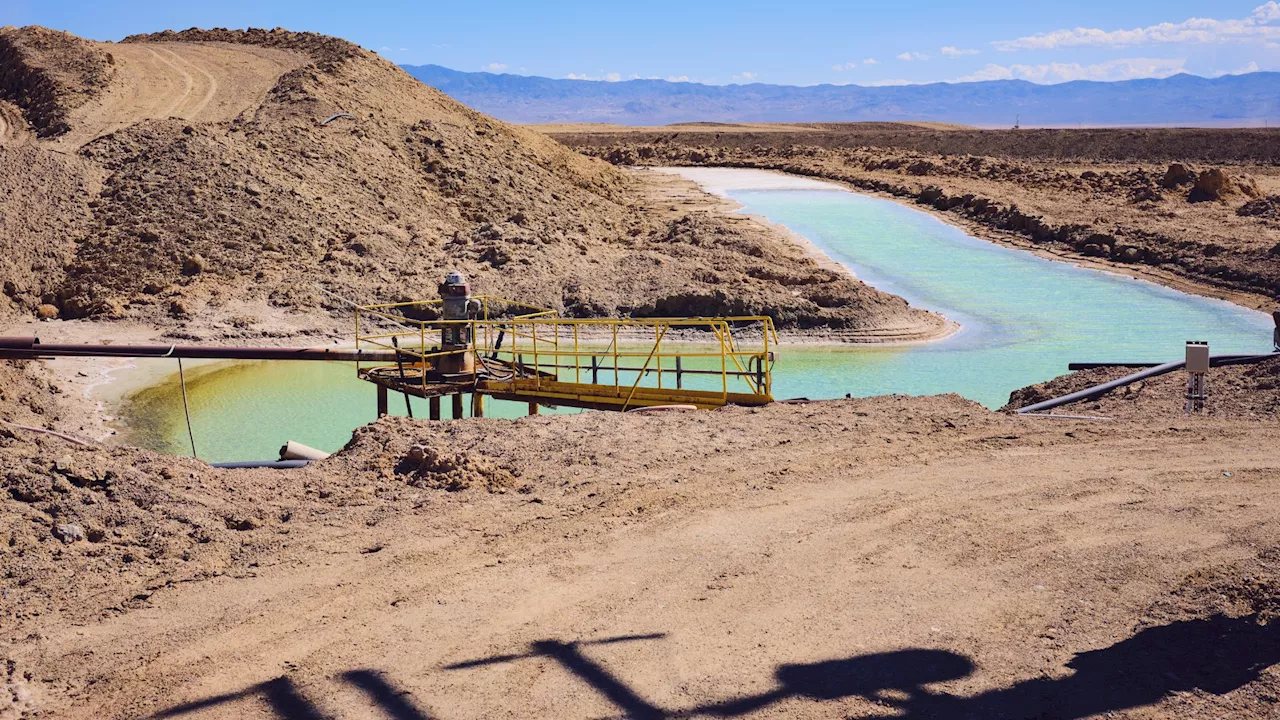Electrochemical reaction-based stimuli-responsive materials are shaping up the era of innovative display devices. By embedding luminescent europium(III) complexes and color-changing viologen derivatives in a layered clay matrix, the device achieves simultaneous control of light emission and color at low voltage.
Electrochemical reaction-based stimuli-responsive materials are shaping up the era of innovative display devices. By embedding luminescent europium complexes and color-changing viologen derivatives in a layered clay matrix, the device achieves simultaneous control of light emission and color at low voltage. The use of clay-based materials also highlights an eco-friendly approach to enhancing electronic device performance.
"Our approach introduces a game-changing concept in dual-mode display design by uniting luminescence and coloration within a single device. This advancement not only enhances performance but also expands the versatility of displays across diverse environments," says Prof. Kobayashi. The device leverages a layered clay compound called smectite, renowned for its ion exchange capacity and strong adsorption properties.
"This technology bridges the gap between energy-efficient reflective displays and high-visibility emissive screens. Its adaptability to different lighting conditions makes it an ideal solution for various applications, from digital signage to portable devices," explains Prof. Nakamura about the applications of these devices.The study's results are compelling. Applying a −2.
Energy And Resources Materials Science Electronics Spintronics Research Computer Science Computers And Internet Mobile Computing
United States Latest News, United States Headlines
Similar News:You can also read news stories similar to this one that we have collected from other news sources.
 Researchers unlock new insights into tin-based catalysts for electrochemical CO2 reductionScientists have discovered a family of tin-based catalysts that effectively convert CO2 into valuable liquid hydrocarbons like ethanol, acetic acid, and formic acid. These findings hold significant potential for sustainable chemical production and reducing carbon dioxide emissions.
Researchers unlock new insights into tin-based catalysts for electrochemical CO2 reductionScientists have discovered a family of tin-based catalysts that effectively convert CO2 into valuable liquid hydrocarbons like ethanol, acetic acid, and formic acid. These findings hold significant potential for sustainable chemical production and reducing carbon dioxide emissions.
Read more »
 The electrochemical cells that could power fridges of the futureAndrew Paul is Popular Science's staff writer primarily focused on tech news. Previously, he was a regular contributor to The A.V. Club and Input, and has had recent work featured by Rolling Stone, Fangoria, GQ, Slate, NBC, as well as McSweeney's Internet Tendency. He lives outside Indianapolis.
The electrochemical cells that could power fridges of the futureAndrew Paul is Popular Science's staff writer primarily focused on tech news. Previously, he was a regular contributor to The A.V. Club and Input, and has had recent work featured by Rolling Stone, Fangoria, GQ, Slate, NBC, as well as McSweeney's Internet Tendency. He lives outside Indianapolis.
Read more »
 Electrochemical Breakthrough: Penn State Researchers Revolutionize Lithium ExtractionResearchers at Penn State have developed a novel electrochemical method for extracting lithium from ore using an electric current and hydrogen peroxide. This groundbreaking process offers a more sustainable and efficient alternative to traditional methods, potentially revolutionizing the lithium industry and contributing to the growth of electric vehicles and portable electronic devices.
Electrochemical Breakthrough: Penn State Researchers Revolutionize Lithium ExtractionResearchers at Penn State have developed a novel electrochemical method for extracting lithium from ore using an electric current and hydrogen peroxide. This groundbreaking process offers a more sustainable and efficient alternative to traditional methods, potentially revolutionizing the lithium industry and contributing to the growth of electric vehicles and portable electronic devices.
Read more »
 Trump 2.0: How Right-Wing Influencers Are Shaping the PresidencyThis article explores the growing influence of right-wing influencers and content creators on the 2024 election and beyond. It highlights key figures like Ben Shapiro, Matt Walsh, and the Paul brothers, examining their role in amplifying Trump's agenda and shaping the political landscape.
Trump 2.0: How Right-Wing Influencers Are Shaping the PresidencyThis article explores the growing influence of right-wing influencers and content creators on the 2024 election and beyond. It highlights key figures like Ben Shapiro, Matt Walsh, and the Paul brothers, examining their role in amplifying Trump's agenda and shaping the political landscape.
Read more »
 Shaping The Next Generation Of Cybersecurity ProfessionalsReliaQuest's Cyber Lab Bootcamp bridges the gap between education and real-world cybersecurity, tackling the talent shortage with hands-on training and mentorship.
Shaping The Next Generation Of Cybersecurity ProfessionalsReliaQuest's Cyber Lab Bootcamp bridges the gap between education and real-world cybersecurity, tackling the talent shortage with hands-on training and mentorship.
Read more »
 Trump's Tariff Return: Shaping USD/CAD and USD/MXNThe reintroduction of tariffs by former President Trump on goods from Canada and Mexico is causing ripples in the USD/CAD and USD/MXN currency pairs. This resurgence of trade tensions echoes 2018 dynamics, with analysts predicting potential volatility and mirroring price movements. Investors are closely watching key resistance levels and the evolving trade negotiations between the nations.
Trump's Tariff Return: Shaping USD/CAD and USD/MXNThe reintroduction of tariffs by former President Trump on goods from Canada and Mexico is causing ripples in the USD/CAD and USD/MXN currency pairs. This resurgence of trade tensions echoes 2018 dynamics, with analysts predicting potential volatility and mirroring price movements. Investors are closely watching key resistance levels and the evolving trade negotiations between the nations.
Read more »
